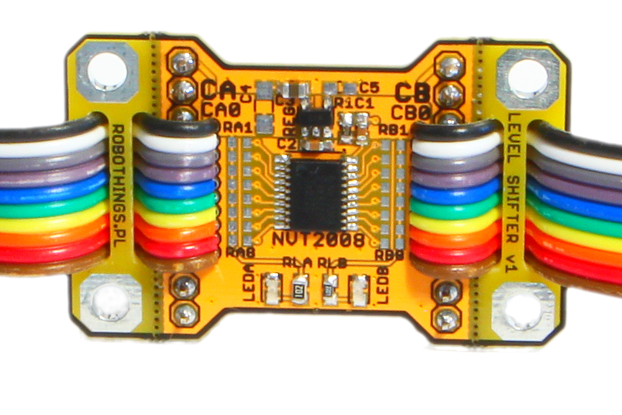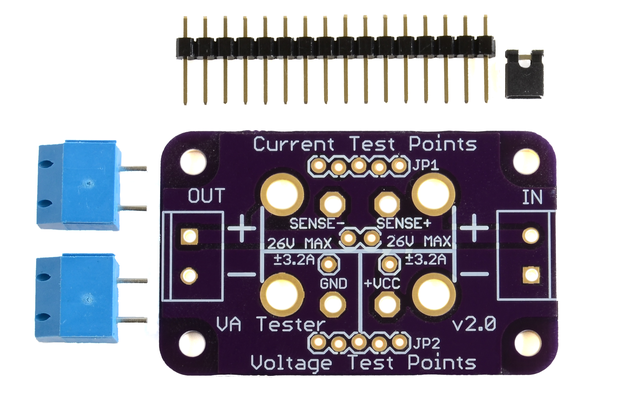Precision Low Voltage Reference with Precision Resistors, Together You Have Precision Current Reference
Designed by JouleTime in United States of America
Buy with confidence.
Our Tindie Guarantee protects your purchase from fraud. Learn More
Precision Low Voltage Reference What is a precision low voltage reference? It is a device that can supply a precise voltage, usually at least .1% accurate. For 5 volts, this would be +/- .005Volts or…
Read More…It is a device that can supply a precise voltage, usually at least .1% accurate. For 5 volts, this would be +/- .005Volts or between 4.995 to 5.005 volts.
No, both may supply 5 volts, the precision reference does not supply the same amount of current. It may only be good for a few milliamps. This is not enough to charge your iPhone, but it can supply the reference voltage to an ADC.
Our precision reference uses the band-gap principle. See bottom of description for more details on band-gap principle.
We have used ours to check the accuracy of our voltmeter. While not a calibration grade piece of equipment, it should be accurate enough for most home and hobby use.
These can be used in test equipment and oscilloscopes because of their precise nature. They can also be used for a precise analog reference to an analog-to-digital (ADC) input on a microcontroller.
For our device, we chose the highest available voltage of 5 Volts. We could have easily gone with a 3.3V, or a 2.5V version, and it would have been easier. Instead we added a voltage divider cicuit with 0.1% precision resistors to provide four additional voltage reference values.
The voltage divider used with precision resistors provides another test for your voltmeter. You can test your voltmeter against the precision resistors to confirm the accuracy of your resistance readings.
The combination of precision voltage and precision resistance gives you a precision current reference. If you connect your voltmeter in line with the voltage divider, then you will get a precision amperage to measure.
Here is a video of the Precision Voltage Reference being used to test a cheap multimeter from Harbor Freight
The DIY kits do require soldering. We would estimate about medium difficulty with hand soldering. The difficulty is with the small parts. You need a fine tip soldering iron, tweezers, and a steady hand. Once you have one side tacked down it is very easy to solder the other side.
We include a paper stencil for applying the solder paste. This is for oven or hot plate soldering. Oven soldering is super easy, but you still need tweezers, and a steady hand to position the parts.
A used toaster oven is easy to find for this purpose. It does need to heat to 250 C or 500 F. Please do not use the same one you use for cooking.
A circuit is built using p-n junctions is such a way as to result in a voltage that is between 1.2-1.3 volts depending on the design. This is close to the theoretical 1.22 eV of silicon at 0 kelvin. Several such circuits can then be combined to create a larger voltage difference. While some circuit designs allow for calibration to improve the accuracy, other devices have an intrinsic precision. The voltage reference we use has a maximum temperature drift of 5 ppm/°C.
No country selected, please select your country to see shipping options.
No rates are available for shipping to .
Enter your email address if you'd like to be notified when Precision Low Voltage Reference - DIY Project can be shipped to you:
Thanks! We'll let you know when the seller adds shipping rates for your country.
| Shipping Rate | Tracked | Ships From | First Item | Additional Items |
|---|---|---|---|---|
|
:
|
Buy with confidence.
Our Tindie Guarantee protects your purchase from fraud. Learn More

$32.00
Free Shipping!

$11.99
Free Shipping!

$14.00
Free Shipping!

$39.98
Free Shipping!
By clicking Register, you confirm that you accept our Terms & Conditions
We recognize our top users by making them a Tindarian. Tindarians have access to secret & unreleased features.
We look for the most active & best members of the Tindie community, and invite them to join. There isn't a selection process or form to fill out. The only way to become a Tindarian is by being a nice & active member of the Tindie community!
